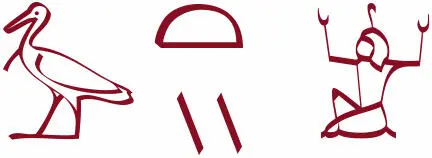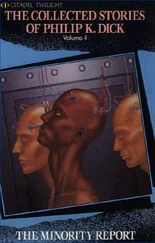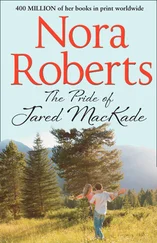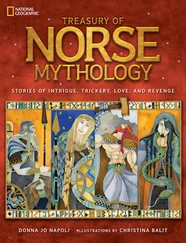Christina Balit - Treasury of Egyptian Mythology - Classic Stories of Gods, Goddesses, Monsters & Mortals
Здесь есть возможность читать онлайн «Christina Balit - Treasury of Egyptian Mythology - Classic Stories of Gods, Goddesses, Monsters & Mortals» — ознакомительный отрывок электронной книги совершенно бесплатно, а после прочтения отрывка купить полную версию. В некоторых случаях можно слушать аудио, скачать через торрент в формате fb2 и присутствует краткое содержание. Жанр: unrecognised, на английском языке. Описание произведения, (предисловие) а так же отзывы посетителей доступны на портале библиотеки ЛибКат.
- Название:Treasury of Egyptian Mythology: Classic Stories of Gods, Goddesses, Monsters & Mortals
- Автор:
- Жанр:
- Год:неизвестен
- ISBN:нет данных
- Рейтинг книги:3 / 5. Голосов: 1
-
Избранное:Добавить в избранное
- Отзывы:
-
Ваша оценка:
- 60
- 1
- 2
- 3
- 4
- 5
Treasury of Egyptian Mythology: Classic Stories of Gods, Goddesses, Monsters & Mortals: краткое содержание, описание и аннотация
Предлагаем к чтению аннотацию, описание, краткое содержание или предисловие (зависит от того, что написал сам автор книги «Treasury of Egyptian Mythology: Classic Stories of Gods, Goddesses, Monsters & Mortals»). Если вы не нашли необходимую информацию о книге — напишите в комментариях, мы постараемся отыскать её.
Treasury of Egyptian Mythology: Classic Stories of Gods, Goddesses, Monsters & Mortals — читать онлайн ознакомительный отрывок
Ниже представлен текст книги, разбитый по страницам. Система сохранения места последней прочитанной страницы, позволяет с удобством читать онлайн бесплатно книгу «Treasury of Egyptian Mythology: Classic Stories of Gods, Goddesses, Monsters & Mortals», без необходимости каждый раз заново искать на чём Вы остановились. Поставьте закладку, и сможете в любой момент перейти на страницу, на которой закончили чтение.
Интервал:
Закладка:
The National Geographic Society is one of the world’s largest nonprofit scientific and educational organizations. Founded in 1888 to “increase and diffuse geographic knowledge,” the Society’s mission is to inspire people to care about the planet. It reaches more than 400 million people worldwide each month through its official journal, National Geographic, and other magazines; National Geographic Channel; television documentaries; music; radio; films; books; DVDs; maps; exhibitions; live events; school publishing programs; interactive media; and merchandise. National Geographic has funded more than 10,000 scientific research, conservation, and exploration projects and supports an education program promoting geographic literacy.
For more information, please visit www.nationalgeographic.comcall 1-800-NGS LINE (647-5463), or write to the following address: National Geographic Society 1145 17th Street N.W. Washington, D.C. 20036-4688 U.S.A.
Visit us online at
nationalgeographic.com/books
For librarians and teachers:
ngchildrensbooks.org
More for kids from National Geographic:
kids.nationalgeographic.com
For information about special discounts for bulk purchases, please contact National Geographic Books Special Sales:
ngspecsales@ngs.org
For rights or permissions inquiries, please contact
National Geographic Books Subsidiary Rights:
ngbookrights@ngs.org
eBook ISBN: 978-1-4263-1861-0
Hardcover ISBN: 978-1-4263-1380-6
Hardcover Library Binding ISBN: 978-1-4263-1381-3
v3.1
Version: 2017-07-06
For the spirit of my maternal grandmother, who was born in Alexandria. —DJN
To my special friend Tessa. —CB
CONTENTS
Cover
Title Page
Copyright
Dedication
Introduction
Preface
RA
(HELIOS)
God of Radiance
THE GREAT PESEDJET
A Hierarchy of Gods
SET
(SETH)
Envious God
ASET
(ISIS)
Devoted Wife and Mother
USIR
(OSIRIS)
God of the Afterlife
NEBET HUT
(NEPHTHYS)
Goddess of Service
HERU SA ASET
(HORUS THE YOUNGER)
Young Warrior God and King
INPU
(ANUBIS)
God of Mummification
TEFNUT
(TPHENIS)
Goddess of Moisture
THE GREAT NILE
The Source of So Much
TEHUTI
(THOTH)
God of Knowledge
HERU WER
(HORUS THE ELDER)
Winged Sun Disk and Protector of Egypt
HUT HERU
(HATHOR)
Goddess of Delights
SEKHMET
(SACHMIS)
Goddess of Vengeance
NIT
(NEITH)
Warrior Goddess and Weaver of the Cosmos
KHNUM
(CHNOUMIS)
God of the Potter’s Wheel
SOBEK
(SOUCHOS)
Crocodile God
BASTET
(BAST)
Cat Goddess
FUNERAL RITES
The Importance of Preparation and Judgment
IMHOTEP
(IMUTHES)
God of Medicine and Architecture
Map of Ancient Egypt
Time Line of Ancient Egypt
Cast of Characters
Postscript
Bibliography
Find Out More
Index
About the Authors
INTRODUCTION
All people count on the sun. It gives them light and warmth. And they count on fresh water, too. Animals and plants need rain, even those that live in the sea, for the sea would grow too salty without it. In modern times, farmers still are concerned with sun and fresh water, because they rely on both to make plants grow, but city people might not think about it much. Our light can be turned on with a wall switch. Our water comes to us through pipes. But in ancient times, sun and fresh water were everyone’s concern.
Humans wandered through the Nile valley thousands and thousands of years ago. But around the year 7000 B.C., humans settled there for good. They lived in small, scattered tribes. They foraged and hunted for food, and they raised domesticated animals, such as cows and sheep. In those days Egypt had plenty of grassy land for animals to feed on, especially to the west of the Nile valley, and it also had a mild, wet climate.
But then the climate grew drier. The grasslands known as savannas shrank. Deserts formed. Wild animals had to move close to the Nile shores for water. People followed the animals. Soon towns appeared up and down the riverbanks. And by around 4000 B.C. people turned to
farming to produce food. Perhaps there weren’t enough plants for foraging anymore. Or perhaps they learned farming from foreigners. Either way, farming meant they could feed lots of people. So towns grew large and stable.Egyptian farmers relied on three seasons. One season was the flood, when the Nile would overflow its banks. As the floods withdrew, they left behind a muddy substance called silt. Silt is rich in minerals, and it made the soil fertile. Next came the planting and growing season. Finally came the hot and dry harvest season, the time when farmers gathered their crops.
Ancient Egyptian mythology put the sun god Ra in
charge of these seasons. After all, his movement across the sky made day and his movement across the underworld made night. Because of his light, crops grew. The very pattern of Egyptian life depended upon Ra.Egyptian mythology reflects this. Ra is one of the earliest gods, and he remains an
important god throughout the long history of ancient Egypt. Most other deities begin somehow from Ra. His tongue, his eye, his saliva, his breath even—they all can step forward as independent gods and goddesses. His thoughts and words create objects and living beings. From his tears came the first humans. Perhaps the Egyptians, then, really believed in only one god—the sun god—who could take many forms.A note to ebook readers: We hope you find the art in this book as enchanting as we do. To experience it in more detail, you may be able to enlarge it. In most reading systems, you can double tap on the image to bring up a full-screen viewer with zoom and pan functionality.
PREFACE
History of Egyptian
NamesIt’s hard to know what ancient Egyptians called their
gods because they wrote names differently at different times and left out important information. For example, in the earliest hieroglyphs the god Tehuti’s name was:
The first symbol, the
ibis, is Tehuti’s sacred bird. The second is a symbol for the first sound of “top”: This shows us that his name started with a t. Under that is a symbol for the first sound of “yet.” The last is a symbol showing this is a god’s name.By the time of the Old Kingdom (2575–2125 B.C.), the ibis was often replaced by three symbols:
The “snake” stands for the first sound of “June.” The “twisted flax” stands for a harsh h sound like the one we make when we exhale on glasses before cleaning them, and the “quail chick” stands for the sound(s) following l in “glue.”
By the Middle Kingdom (2010–1630 B.C.), the first symbol was often replaced with  , representing the first sound of “dog.” And in the late period (664–332 B.C.) the first symbol was often , perhaps representing the first and maybe second sounds of “tell.”
, representing the first sound of “dog.” And in the late period (664–332 B.C.) the first symbol was often , perhaps representing the first and maybe second sounds of “tell.”
So the initial sound of Tehuti’s name changed three times. And linguists argue over what the rest of the sounds in his name were.
When the Greeks invaded, they recorded myths using their alphabet. But Egyptian and Greek did not have exactly the same sounds, so transcribing from one alphabet to the other was only approximate. In addition, Greek spellings were based on more modern pronunciations than those of early Egypt.
Читать дальшеИнтервал:
Закладка:
Похожие книги на «Treasury of Egyptian Mythology: Classic Stories of Gods, Goddesses, Monsters & Mortals»
Представляем Вашему вниманию похожие книги на «Treasury of Egyptian Mythology: Classic Stories of Gods, Goddesses, Monsters & Mortals» списком для выбора. Мы отобрали схожую по названию и смыслу литературу в надежде предоставить читателям больше вариантов отыскать новые, интересные, ещё непрочитанные произведения.
Обсуждение, отзывы о книге «Treasury of Egyptian Mythology: Classic Stories of Gods, Goddesses, Monsters & Mortals» и просто собственные мнения читателей. Оставьте ваши комментарии, напишите, что Вы думаете о произведении, его смысле или главных героях. Укажите что конкретно понравилось, а что нет, и почему Вы так считаете.












